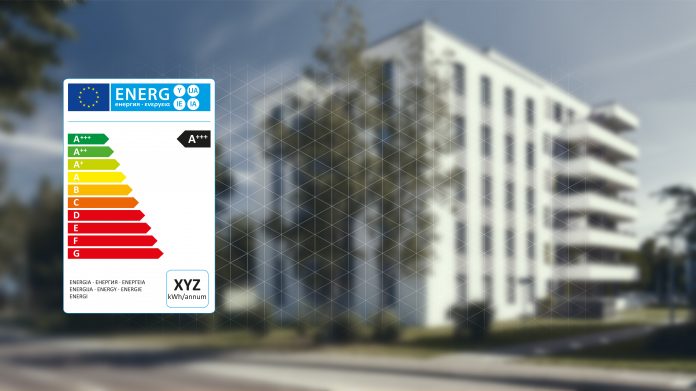Chantel Scheepers, CEO of OakTree Power, explains how old infrastructures don’t need to be overhauled to achieve net zero if, with the help of DSR technology, a building’s energy consumption can be properly assessed
In October the British government published its strategy for achieving net zero nationwide carbon emissions by 2050. But according to a new House of Lords report, we’re going to miss our target.
Buildings present an area where we could expect the most significant improvement. They produce 39% of the world’s energy-related carbon emissions. Over 70% of those emissions result from operational requirements like heating, lighting and ventilation. The flexibility of a commercial building presents a huge opportunity to reduce energy consumption, and even reduce business costs.
Constructing new, green buildings will improve the situation in the long term. But for now, we need a rapid response to meet the 2050 target.
Are Energy Performance Certificates a good indicator of a building’s energy and carbon performance?
Almost all commercial properties in the UK require an Energy Performance Certificate (EPC). The certificates, introduced around 15 years ago, rate a property from A to G in relation to its energy efficiency. A property with a ‘G’ rating is supposed to be very inefficient. A property with an ‘A’ rating is supposed to demonstrate optimal efficiency. But there’s a problem.
Recent analysis by the Better Buildings Partnership – a collection of the UK’s top commercial property owners – suggests some properties with ‘A’ ratings produce more carbon emissions than those with ‘C’, ‘D’, ‘E’, and even ‘F’ ratings. In fact, a 2021 government departmental paper suggested there was no relation between the two at all. In the paper’s own words: “In large and complex buildings in particular, the evidence is showing that there is almost no correlation between a building’s EPC score and its actual energy and carbon performance in practice.”
The problem is the result of a disparity between predicted and actual energy use. When properties are audited to produce their performance certificate, their systems may consume a certain rate of energy. There may be an estimated number of employees or predicted working schedule. But when that property changes hands, or if an owner adjusts the systems, that rate of consumption can change by a large measure. During the pandemic, for example, office usage remained volatile. Even now, many businesses are transitioning to ‘hybrid working’ policies and buildings are experiencing different usage now as compared to last year. A property with an ‘A’ rating may produce the same emissions expected from one rated ‘F’, and vice versa.
Whether the certification system adjusts to reflect this or not, the research highlights the importance of building maintenance in energy consumption. Architects may design a ‘green’ building, but its use will determine the eventual carbon emissions.
Assessing your building’s energy consumption
Improving your building’s energy efficiency will rely on your understanding of its current usage. As mentioned, this may be very different to the ‘expected usage’ its architects or previous owners imagined. You may hire a staff much smaller than that of the previous proprietor’s. Or you may have redesigned the internal space to better suit your business’s needs. Both can affect your energy usage by a wide margin.
There are several ways to assess your building’s current energy requirements. Some involve sensors to monitor indoor and outdoor temperatures. Some account for hourly footfall to analyse the behaviour of those working inside. However it’s done, it’s important you do it. The results will tell you where your inefficiencies lie.
Accessing financial incentives and achieving emissions targets
Once you’ve assessed your actual energy usage, it’s time to act on it. One of the most attractive ways to do this is through participation in balancing, flexibility and constraint programmes.
In response to emissions targets, the UK has increased its capacity for renewable energy by a huge amount over the past decade. In the nine years to 2019, energy produced by wind farms more than tripled. But the physics of renewable energy means there are occasional dips in supply. National Grid has introduced financial incentives for some properties to reduce their energy consumption in those times of low supply. That’s the basics of DSR, simply matching supply and demand during peak times/grid stress.
The concept of DSR has been around for many years with several businesses already reaping the benefits and for business owners that might be hesitant, it’s important to know the process is seamless, intelligent and silent with zero operational impact. During periods of DSR, businesses can use the knowledge of their building’s energy consumption to lower usage in areas where the change would go unnoticed. Every commercial building has flexibility that could be modulated for very short periods of time to unlock savings, and generate revenues while tackling previously unavoidable emissions. And service providers will even help them do it with zero capital investment.
Now and in the future, it will be important for businesses to focus on building sustainable workplaces. But for now, we need to improve the way we consume energy. Many businesses will have their own carbon emissions targets, which can be difficult to fit into a sustainable financial model. Schemes like National Grid’s DSR programme present fantastic opportunities to achieve emissions targets and run a profitable business.














